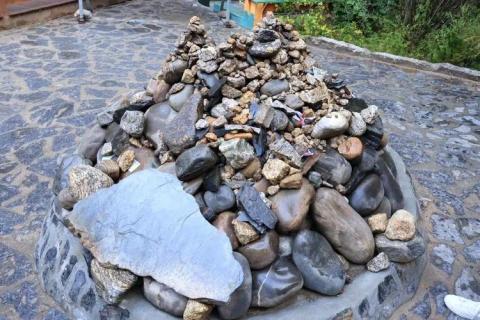
After dinner at 7 o'clock in the morning on October 7th, a minibus took 27 of us tourists to Kadinggou scenic spot.
Kadinggou is located on National Highway 318 in Linzhi County, Linzhi Prefecture, Tibet Autonomous Region, only 24 kilometers away from Bayi Town where we live. Kading Valley is located on the banks of the Niyang River. It is a typical canyon landform with high mountains, deep ravines, strange peaks and rocks, and towering ancient trees.
"Kading" in Tibetan means "heaven and earth". This is the origin of Kading Mountain. Kadinggou is famous for its waterfalls. At the main peak of the mountain, a waterfall with a height of nearly 200 meters flows down, majestic and majestic. In the waterfall, a naturally formed giant Buddha with a kind face appears and disappears in the waterfall, hence the name Tianfo Falls. The waterfall floats down like a silver chain. When the water is high, it is majestic and thrilling. There are naturally formed Buddha statues and guardians on the rock walls. There are dense virgin forests in the valley, and there are beautiful legends that are integrated with Tibetan Buddhism.
Kadinggou Waterfall Scenic Area has a steep mountain with broad-leaved trees at the foot, mixed broad-leaved and coniferous forest on the mountainside, and coniferous forest at the top. The scenery at the foot of the mountain is the most beautiful. The sound of gurgling water, shady trees, and a large number of spotted bamboos make people feel like they have entered a water town in the south of the Yangtze River.
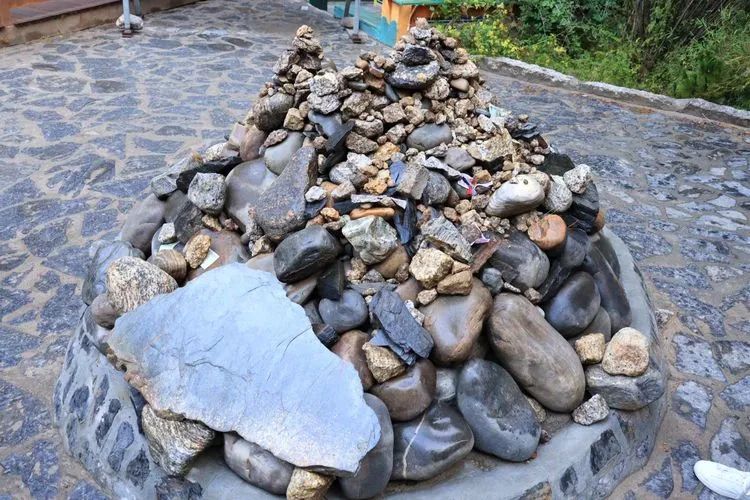
In Tibet, besides prayer flags, the most common pile of stones is this pile of stones. This is called a Mani pile, and like the prayer flags, it is used for praying.
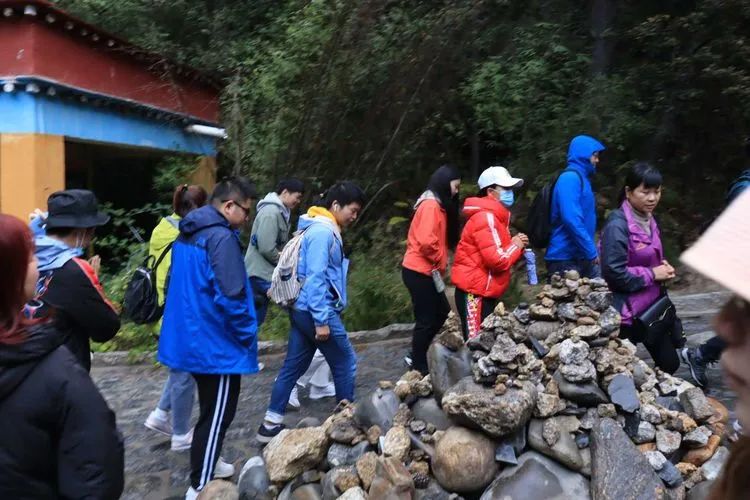
Under the guidance of the tour guide, everyone walked around Manidui three times clockwise to pray for their families.
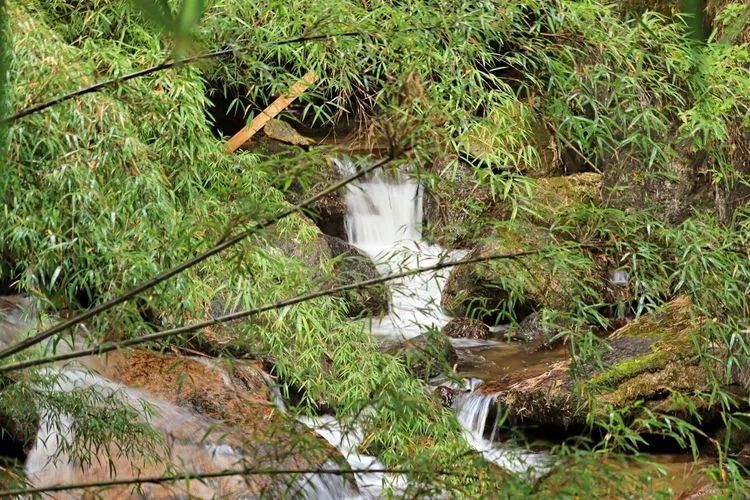
Entering the scenic spot, I found that it looked like a water town in the south of the Yangtze River, with tinkling springs, luxuriant water plants, and acres of bamboo forests.
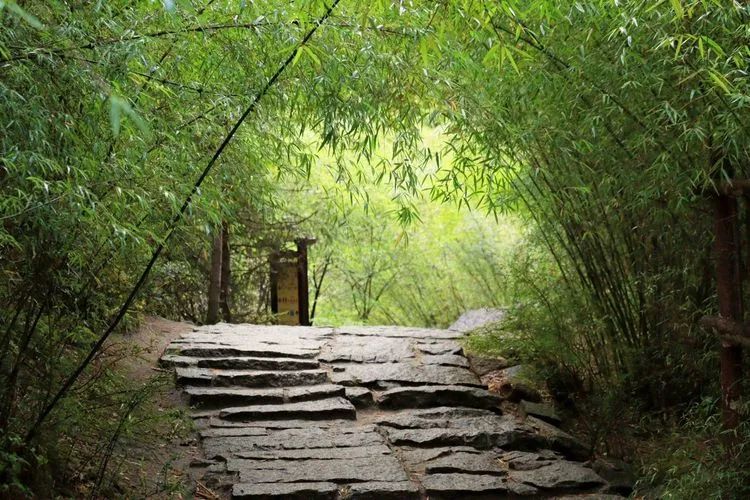
winding path leading to secluded place
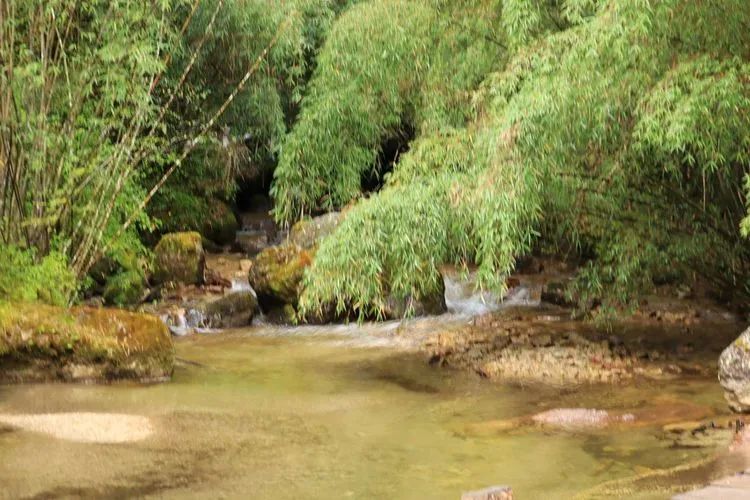
A stream of water suddenly appeared deep in the jungle

Walking on the wet stone path in the middle of the canyon, the stones on the cliffs on both sides have formed patterns of various colors due to years of weathering and rain erosion.
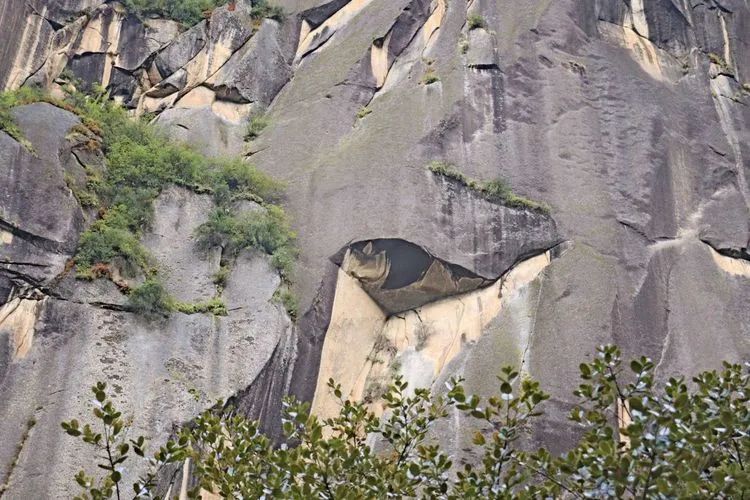
This pattern is amazing
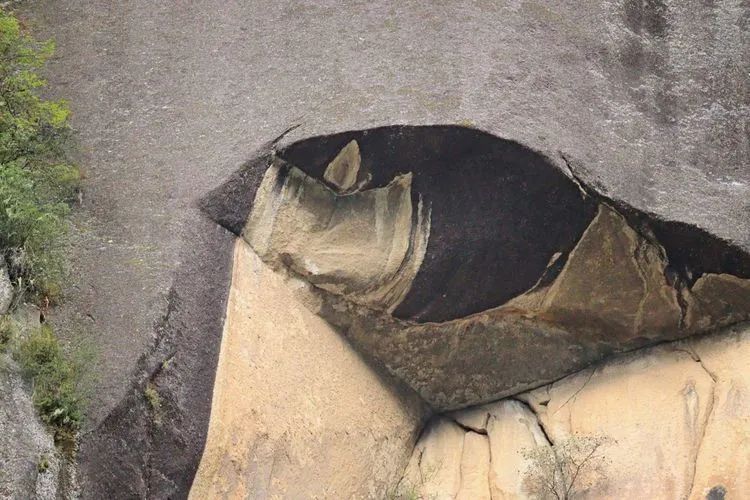
Can't see clearly? Use telephoto to zoom in. Does it look like a Buddhist lantern that lasts all year round?
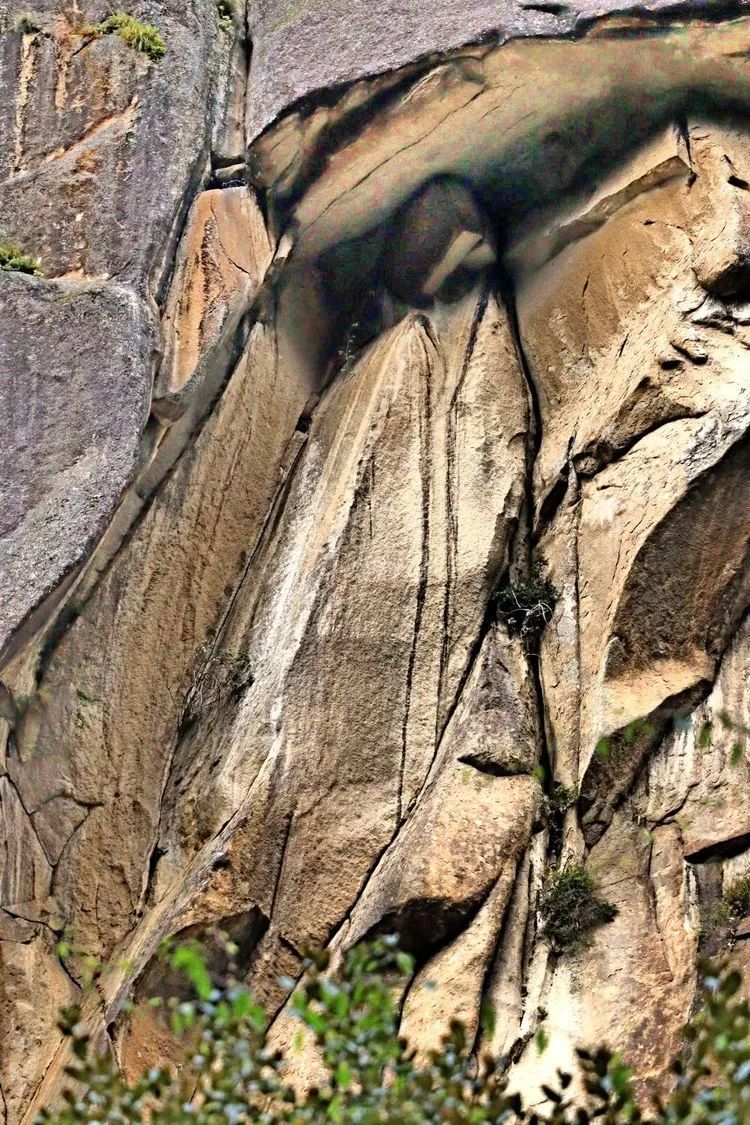
If there is a Buddhist lantern, there should be a monk. In the lower left corner of the Buddhist lantern, there is a bald monk wearing a loose robe, looking up at the Buddhist lantern.
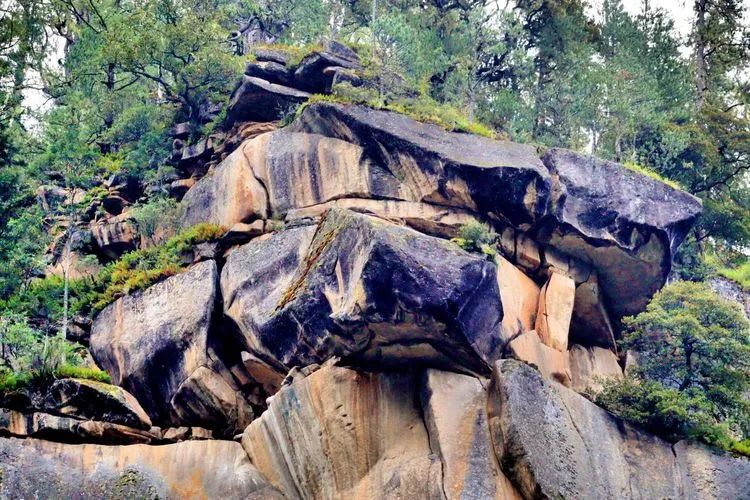
Opposite the monk, a turtle poked its head out curiously and looked down. It can be called the turtle exploring the sea.
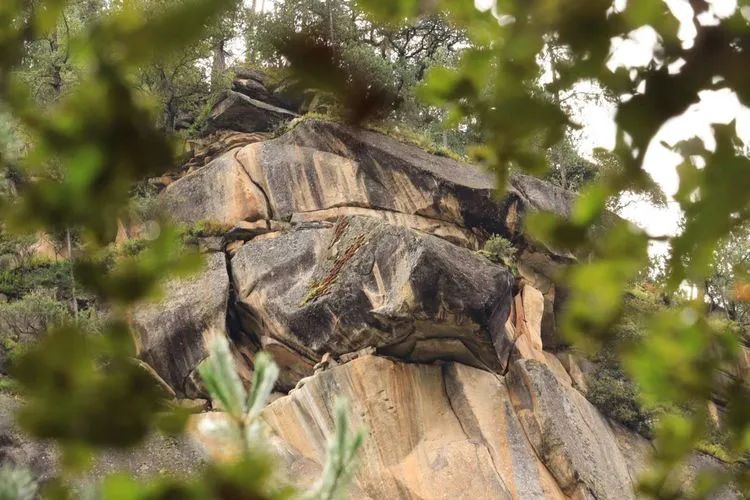
If you can't see it, just try looking at your head
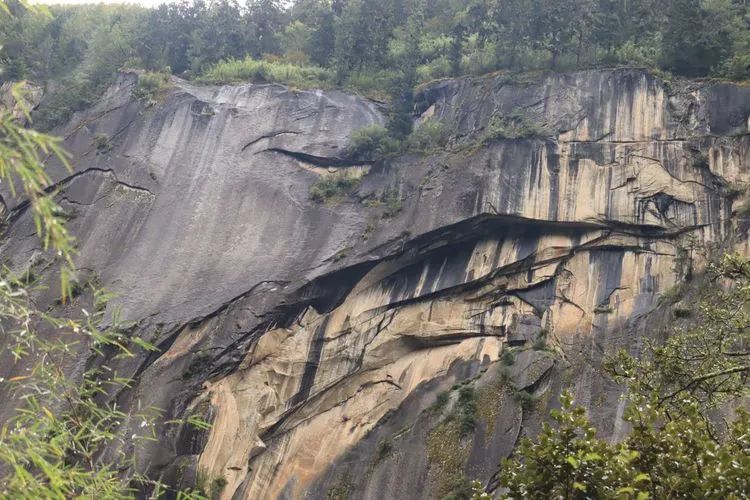
Going further, an eagle head appeared on the cliff on the right, with something in its mouth. This attraction is called Condor Presenting Treasures.
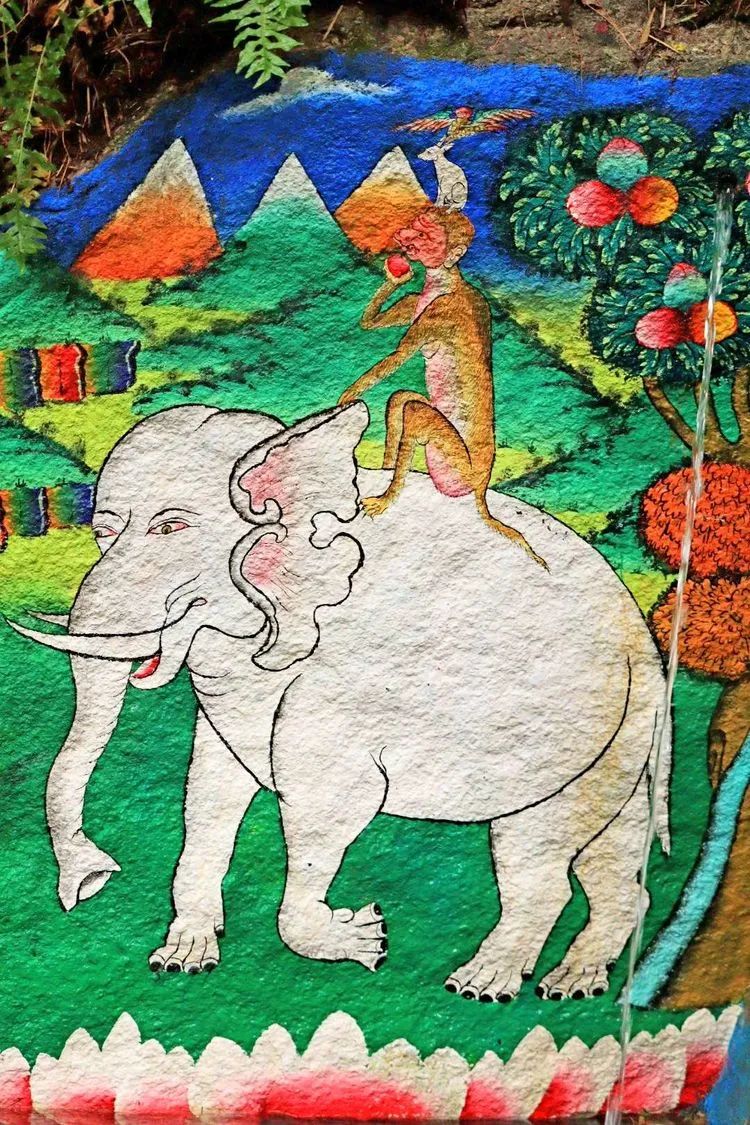
Next to a fountain, there is a beautifully painted thangka, with four animals placed together, representing the equality and harmony of all living beings.

Walking to the middle of the scenic spot, a waterfall hangs across the mountain wall. It is said that if you can see a Buddha statue in a waterfall, you are a person who has a connection with Buddha.

Use telephoto to zoom in and see that there is indeed a Buddha face on the left side of the waterfall. Round forehead, long chin, mouth closed, eyes closed in meditation.
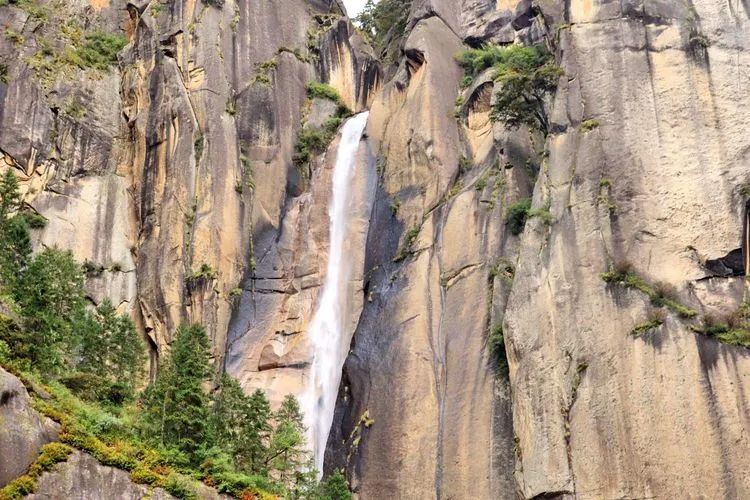
In addition to the head of the Buddha next to the waterfall, there are Bodhisattvas and protectors on the left and right.
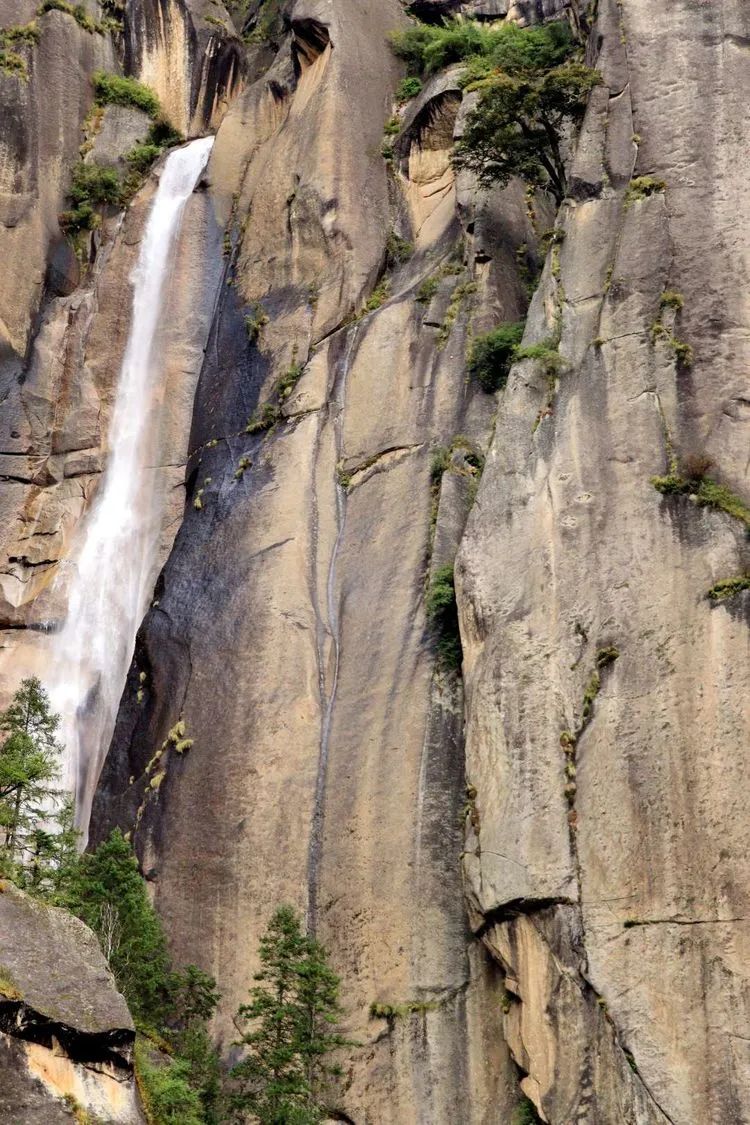
There is a particularly expressive guardian on the right side of the waterfall. It is 170 meters high, wearing a robe, a belt, and a veil on its face.
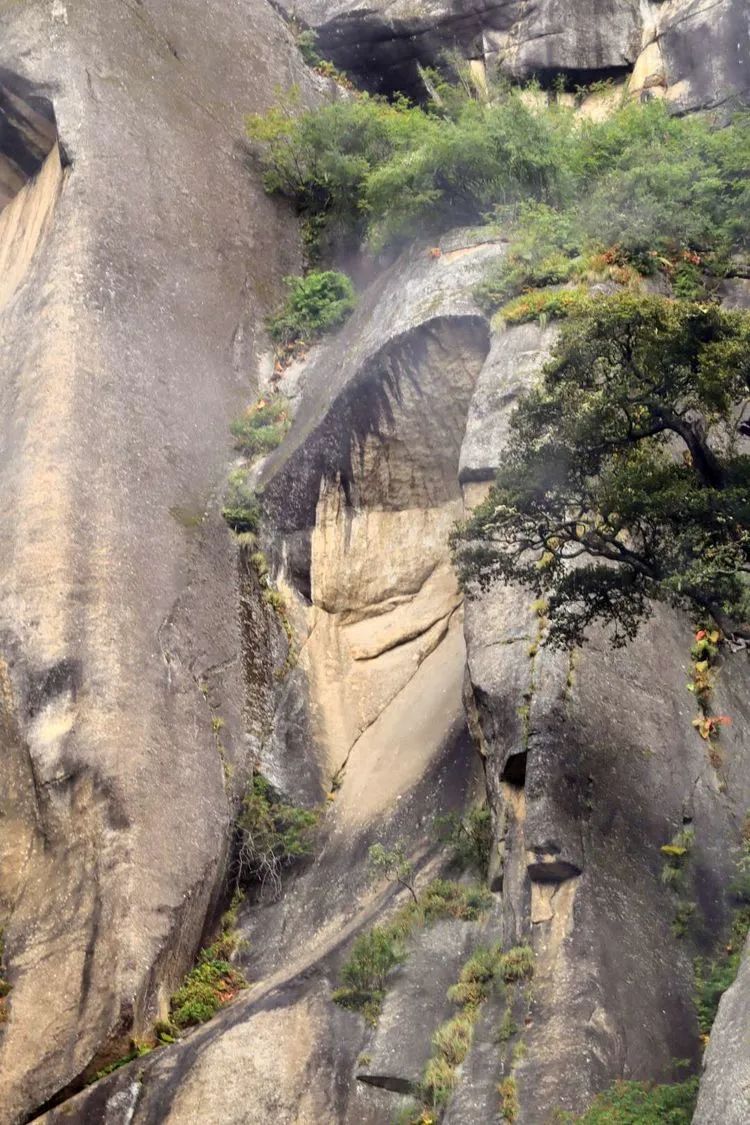
The camera zooms in for a close-up of the face. Her hair covers her forehead and she wears a veil. Tibetans call it Bandan Lhamo, which is the patron saint of the Potala Palace and Jokhang Temple specially invited from India.
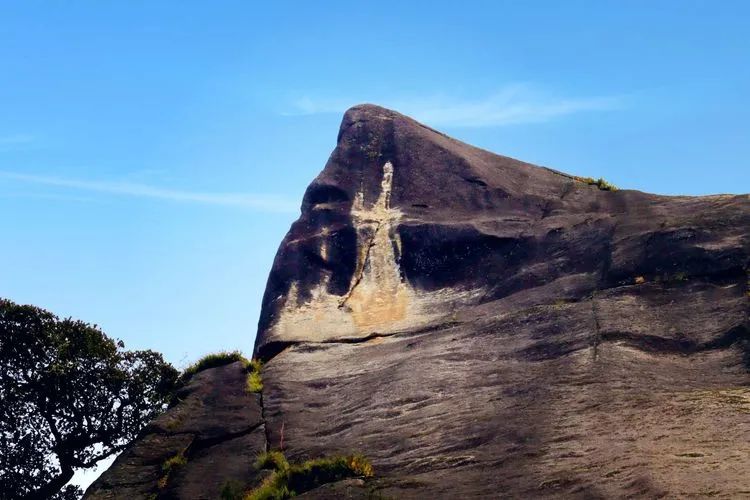
In the upper right corner of Tianfo Waterfall, there is an even more lifelike statue of Guanyin Bodhisattva. The Bodhisattva is holding a jade purification vase in his right hand, a willow branch in his left hand, stepping on lotus flowers and auspicious clouds.

There are two people on the left side of the waterfall. The one on the left is an old man with a long beard. The one on the right is carrying a bag and smiling with his teeth exposed.
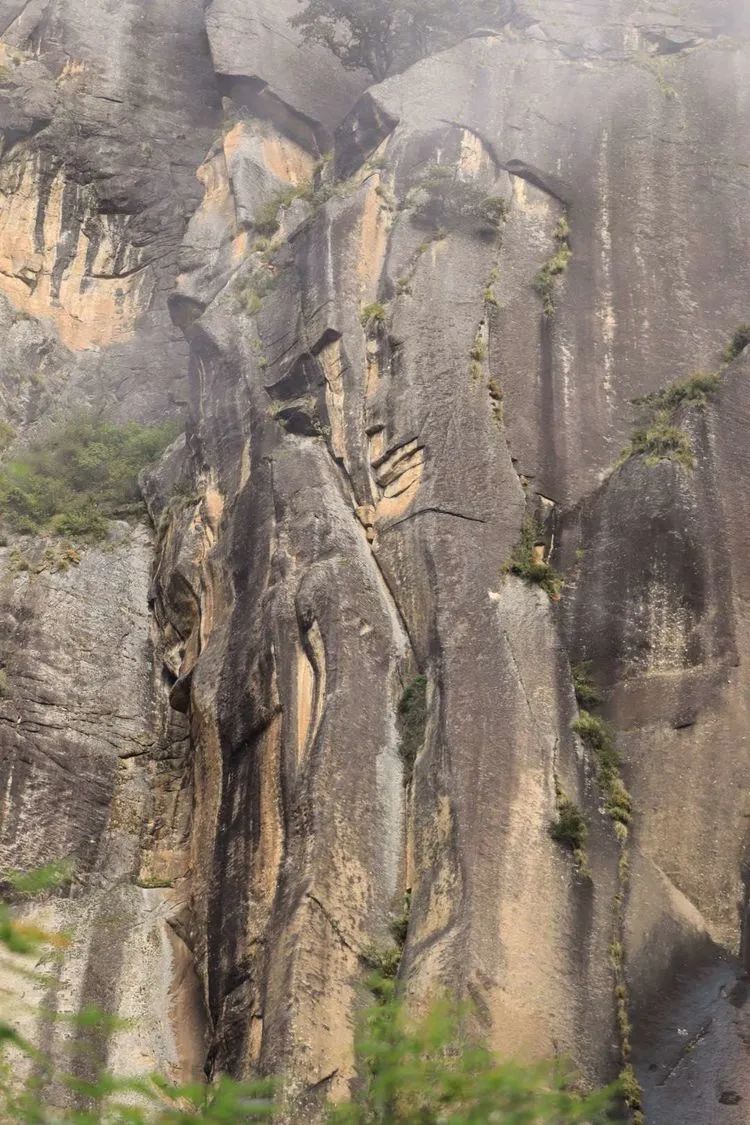
If you look closer with telephoto, the two face shapes should be obvious. Because the faces and bodies of these two are not very solemn, and they are not closely related to Buddhism, there is no publicity in the scenic spot. It was Lao Liu who saw it himself.
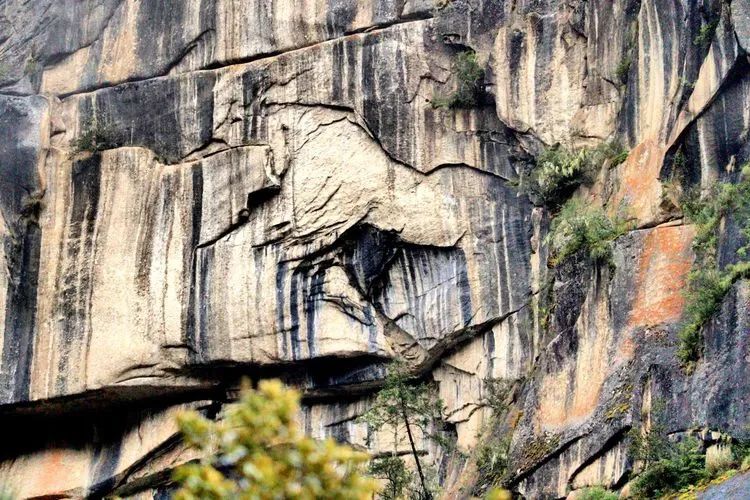
In addition to the above modeling discoveries, Lao Liu also discovered several others. Here I saw two people and one horse. An old man with a long beard, an ancient official bowing, and a horse raising its front hooves. In fact, these are three parts of similarity and seven parts of imagination. The benevolent sees benevolence and the wise see wisdom.
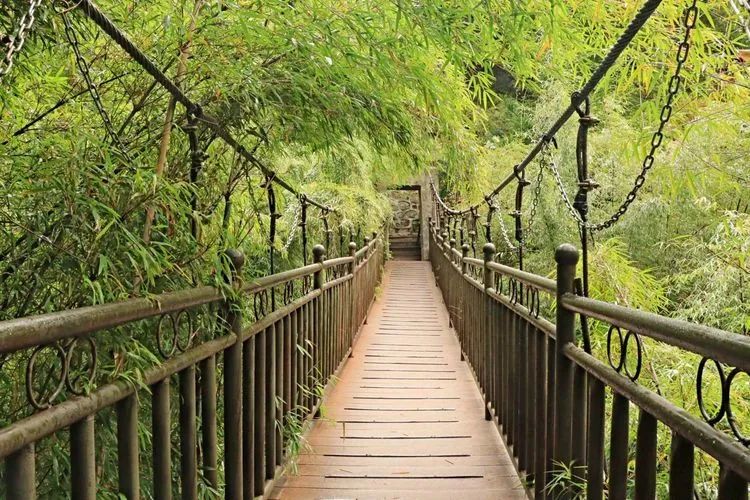
Stepping onto the swaying suspension bridge, visitors can get up close and personal with the waterfall.

The waterfall rushing down from the top of the mountain flows in the valley, creating more beautiful scenery.
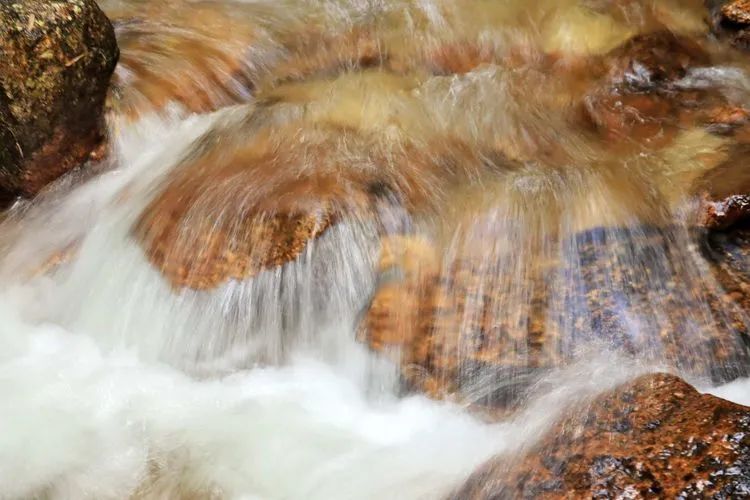
Qingquanshi upper stream

Standing at the foot of the waterfall and looking up, the waterfall is like a silver ribbon falling from the sky.
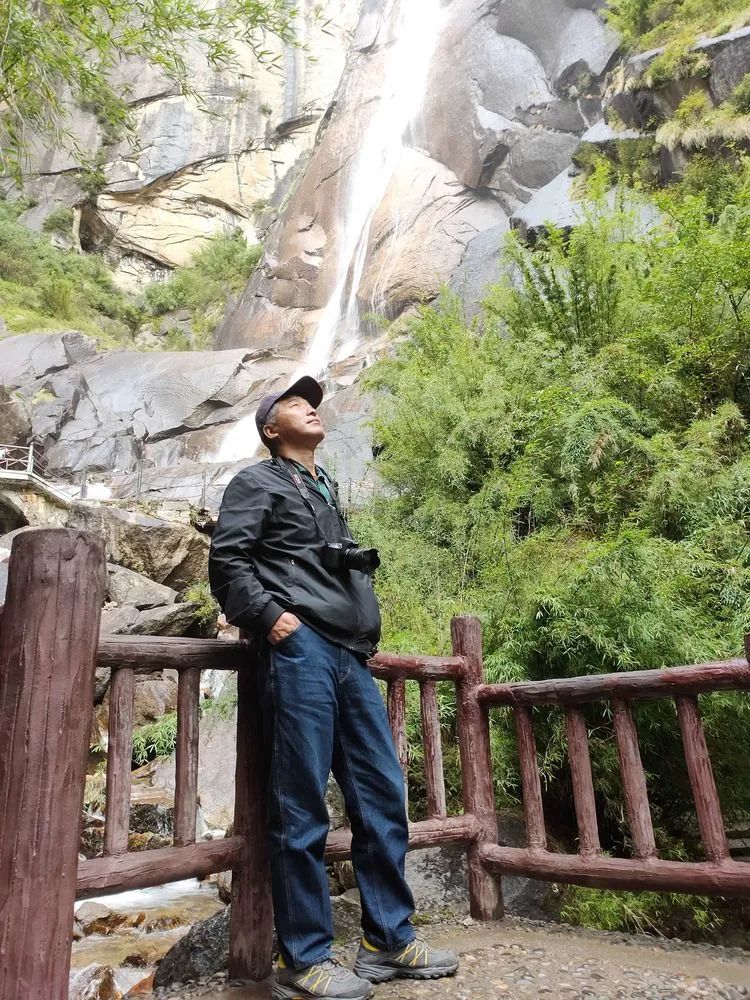
Tianfo Waterfall is not only majestic and fascinating, but its biggest feature is the naturally formed portrait on the stone wall next to it. It really makes people admire the uncanny workmanship of nature! Let’s leave a photo of Lao Liu too.
The scenic spots in Kadinggou are not big. We visited for an hour and started our next target - Tibetan Village at ten o'clock.
Why go to a Tibetan village? It was my first time joining a tour group and I was quite confused. As the tour guide explained, I gradually understood it. It turns out that the Tibetan village we visited today is a model village for targeted poverty alleviation in recent years. The village was built by the province hand in hand with the help of domestic counterparts. We can go there to learn about Tibetan customs and culture, and at the same time buy their things, which can be regarded as poverty alleviation, but shopping is not compulsory.
When it comes to shopping, I feel somewhat conflicted. At first, I chose Gloria Travel Agency because it promised that there would be no shopping arrangements. When I signed the contract, I found out that there were shopping arrangements. I had already paid the deposit and it was too late to choose another travel agency, so I had to hold my nose and admit it. . Now there is another disguised shopping trip. I really cannot praise the integrity of this travel agency.
But let’s make peace with it now, let’s take a look first and then talk about it.
The China-Pakistan tour bus walked along the Niyang River and finally came to a beautiful village. It is indeed a model village. It is surrounded by mountains and rivers, with picturesque scenery. Every house is a two-story building, exactly the same.
The tourists got off the bus one by one and accepted the hada offered by a Tibetan woman. She and each of us smiled and said: "Tashi Delek!", reaching out to avoid hitting the smiling person. We also smiled, bowed our heads and accepted the hada, and responded at the same time. : "Tashi Dele Show!", under her guidance, we came to her home. Her name is Yangjin Dolma, and she introduced her family's vegetable garden and house very enthusiastically. Although they also paid a little token money, they mainly relied on the government's help to build it, so their whole family is very grateful to the party and the government. . It was Chairman Mao who allowed them to be liberated as serfs, and it was the Communist Party that allowed them to live in new houses.
We two groups of more than 30 tourists walked into her living room. Yangjin Zhuoma invited each of us to taste butter tea, highland barley wine and her glutinous rice cake. It was the first time I tasted butter tea. It had a light salty taste, but I didn’t feel anything else. The highland barley wine tasted good, but I didn’t dare to drink more because I was afraid of high altitude sickness.
Yangjin Dolma is fluent in Mandarin and introduced her family to us. Three generations of their grandparents have been living together. Before liberation, my grandfather was a craftsman of the serf class. His father inherited his father's business and married two wives. In the old Tibet, Polygamy and polyandry are very common. Her father was on his way to pilgrimage, taking three steps, one bow, five steps, and one kowtow until he reached the holy place in his heart - the Potala Palace. Before the pilgrimage, my father sold most of the family property and donated it to the temple. Her two brothers worked hard to dig up Cordyceps every year, and the money they cashed out was given to their grandfather. In addition to their own use at home, most of it was also donated to the temple. Tibetans all believe in the afterlife and the afterlife. They are kind to others, are ashamed to do evil things, and do not value money. In order to eliminate the bad karma of the past life, they work hard and are not afraid of hardships. They are willing to donate their life income to temples to benefit others. Tibetans believe in cause and effect and hope to be reborn smoothly through sky burial. If they do bad things, the vultures in the sky may not be willing to eat their meat. If the meat is sent back, the whole family will be unable to hold their heads high in the village. Therefore, no matter whether it is for this life or the next, they are willing to do good deeds and accumulate virtue in order to have a clean soul and body, a smooth sky burial, and a happier life in the next life.
Yangjin Dolma is very talkative. She is the only college student in the village, a party member and a civil servant. In addition to introducing her family, she also introduced Tibetan folk customs and culture, such as sky burials and marriage customs, in addition to Tibetan medicine and handicrafts, and gave an on-site Demonstrating scraping and acupuncture and Tibetan folk remedies for treating diseases. As for silverware crafts, she showed us a silver belt made by her Tashi (husband). Speaking of which, this is thanks to the inheritance of Chinese craftsmen brought by Princess Wencheng, and now it has become a unique handicraft technology in Tibet.
Yangjin Dolma is very eloquent, her language is vivid, and her attitude is sincere. She makes people cry when she talks about the misery of serfs, and makes people laugh when she tells interesting stories about her married life.
Finally, Yangjin Dolma took us to the village handicraft hall. 99.9% pure silver is handmade. The items are really good. Most tourists are willing to help Tibetans if their ability permits. However, silver products are luxury goods after all. They cost 23.8 yuan/gram, which is more than 5,000 yuan for a water cup and a soup basin. It costs more than 10,000 yuan. As for the washbasin, which starts at 30,000 yuan, it still prohibits many people. To reach the same level as Princess Wencheng's daily necessities, it still requires absolute strength and courage.
After lunch, we began to return to Lhasa. The three-day trip to Nyingchi was over. Looking back on the experience of these three days and two nights, we saw the emerald-green Basongcuo, the charming Niyang River, the undulating Yarlung Zangbo River, and the various postures. The Grand Canyon, the majestic Namjagbarwa Peak, the miraculous love peach tree, etc., as well as the natural Tianfo Waterfall I saw today, all left a deep impression on me. , Linzhi alone made me feel that my trip was worthwhile. Linzhi is indeed the little Jiangnan of Tibet. If one must visit Tibet once in a lifetime, then whenever one comes to Tibet, one must visit Linzhi.

The Tibetan village is located beside the Niyang River
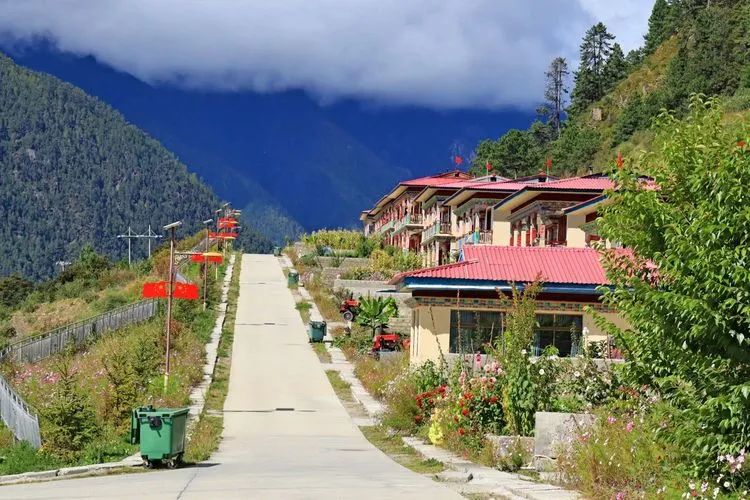
This village receives a large number of tourists every day and the transportation is very convenient

The village is built on the mountain, well-proportioned and very beautiful.
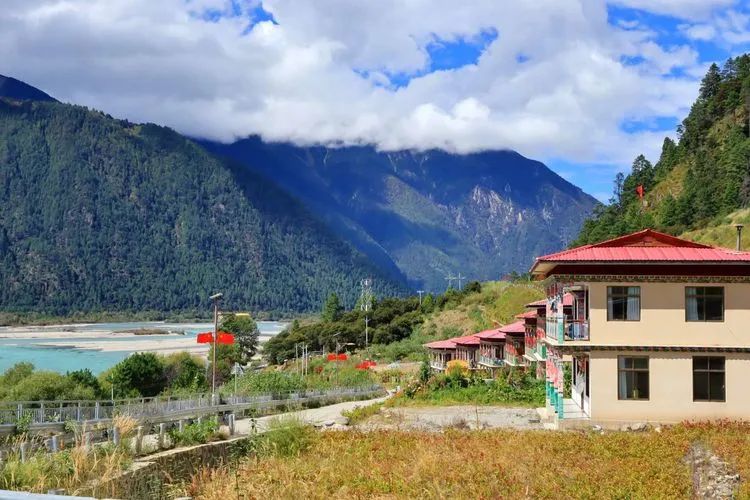
Every house is the same, a two-story villa. It is truly a model village, and most people in the mainland cannot enjoy it. Many tourists come here and feel that they have suddenly become targets of poverty alleviation.
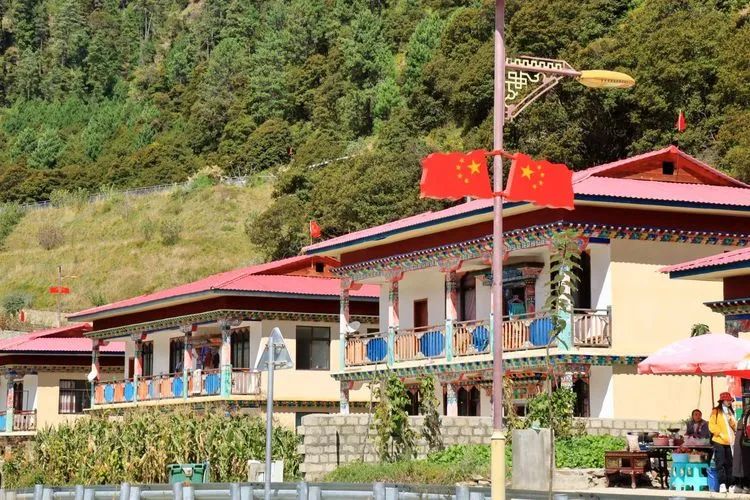
The Tibetans here sincerely support the Communist Party, and the national flag is hung on street flagpoles and on the roofs of every house.
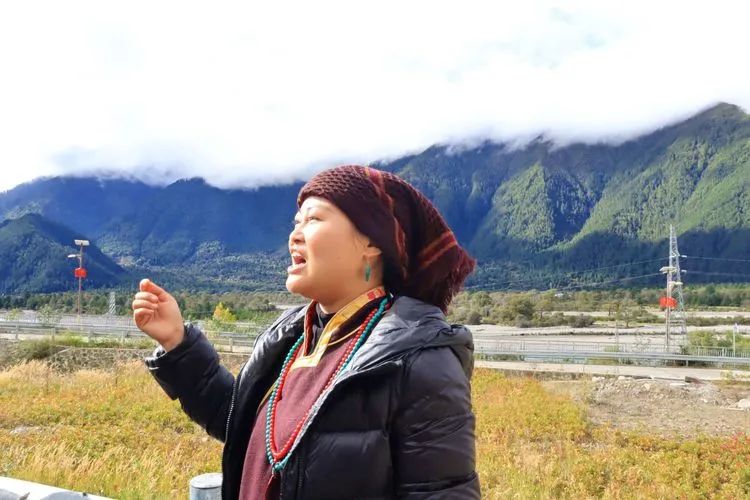
Yangjin Dolma, the local Tibetan who hosted us, had a house built eight years ago, but the villagers only started to receive tourists three years ago. According to Yangjin Zhuoma, her grandfather was relatively feudal and was afraid that she would be spoiled by mainlanders if she came into contact with tourists.
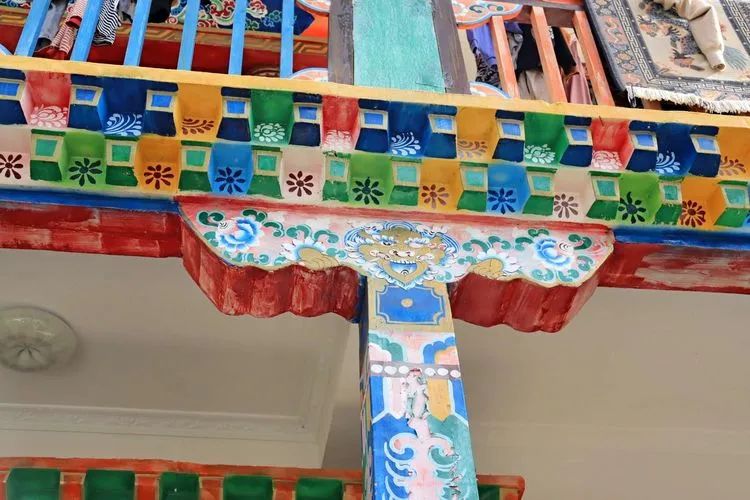
The exteriors of the houses here are all painted with colorful paint, which has ethnic characteristics and is very beautiful.
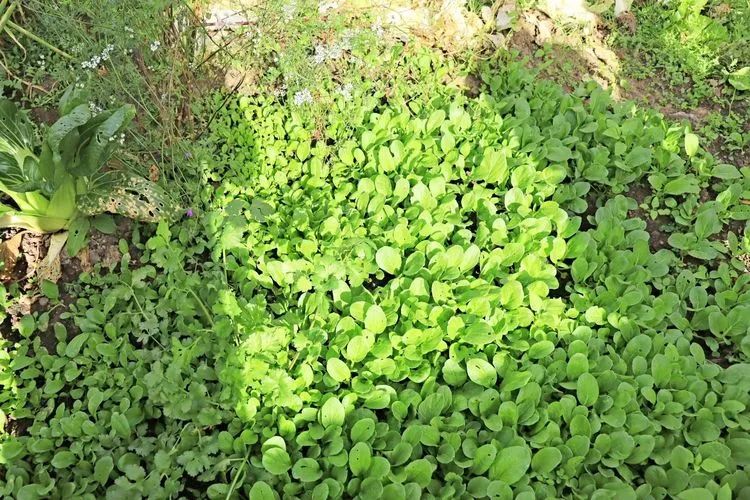
This place is located in Linzhi Xiaojiangnan, where various inland vegetables can be grown.
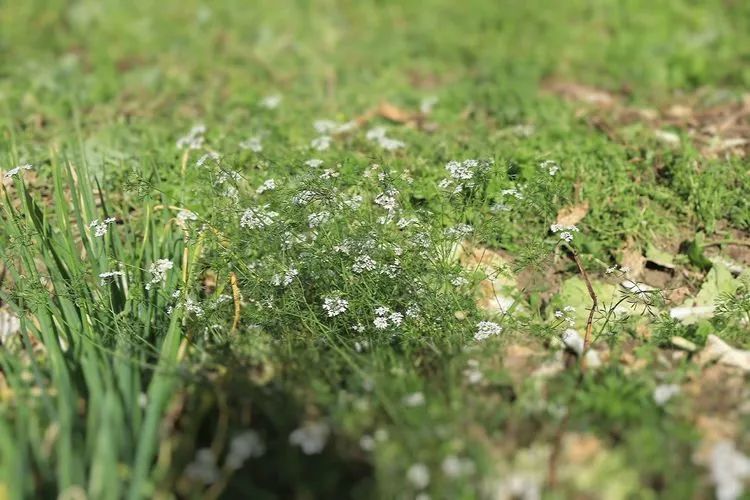
This is a carrot
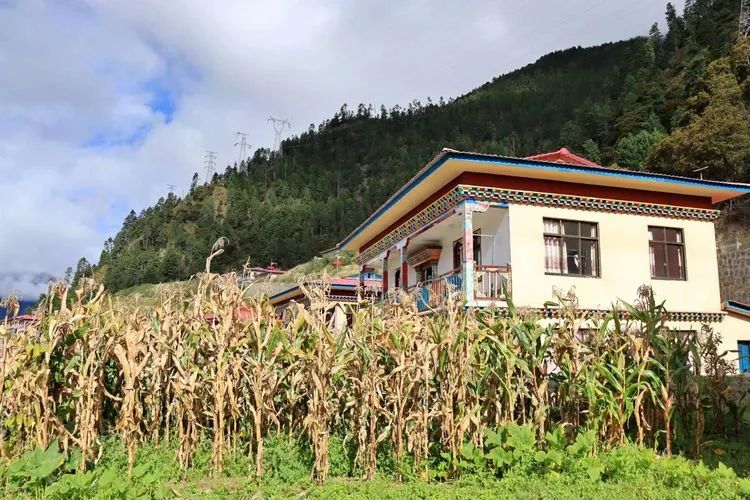
There is even corn planted there
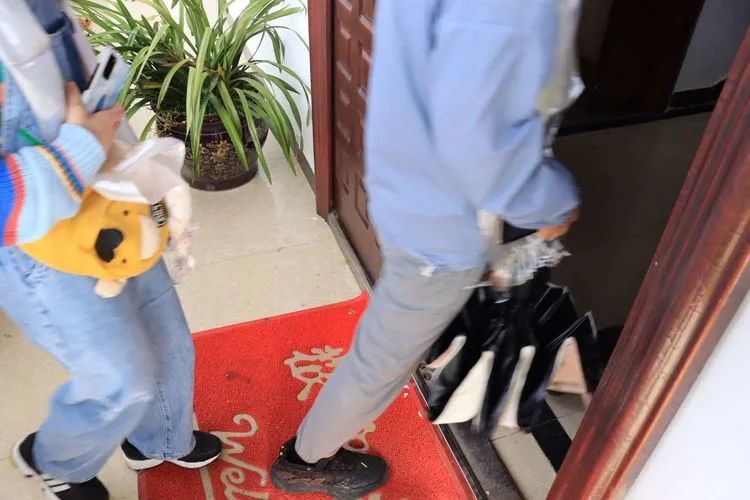
When visiting a Tibetan home, you cannot step on the threshold. You must step forward with your left leg first, otherwise it will be disrespectful. And no photography is allowed at home.
